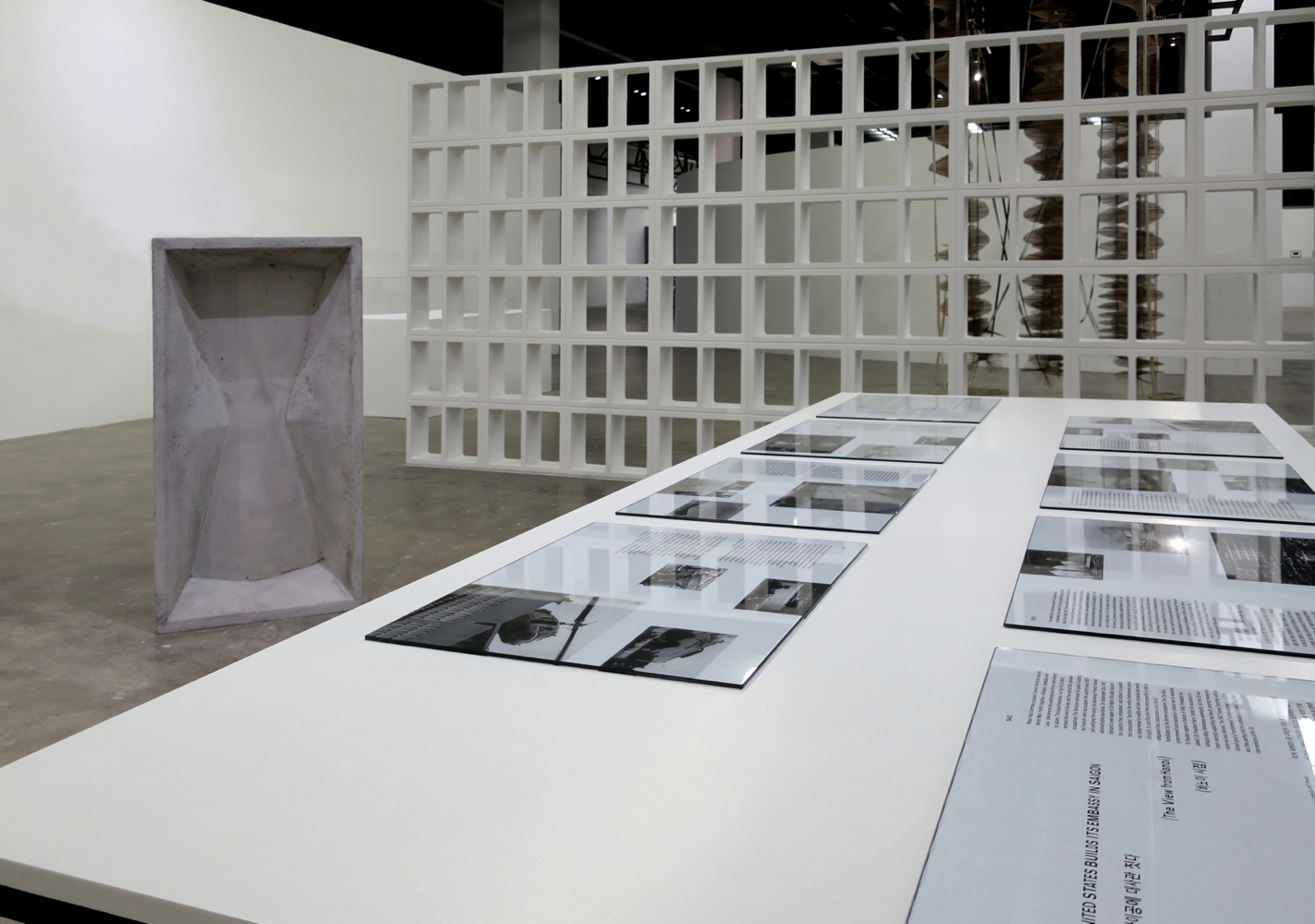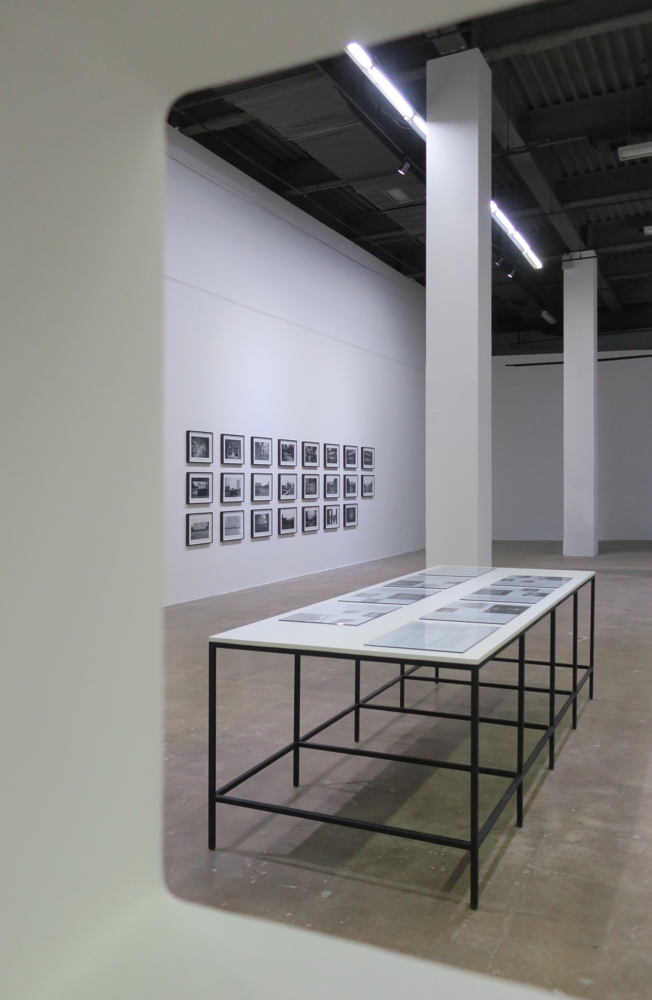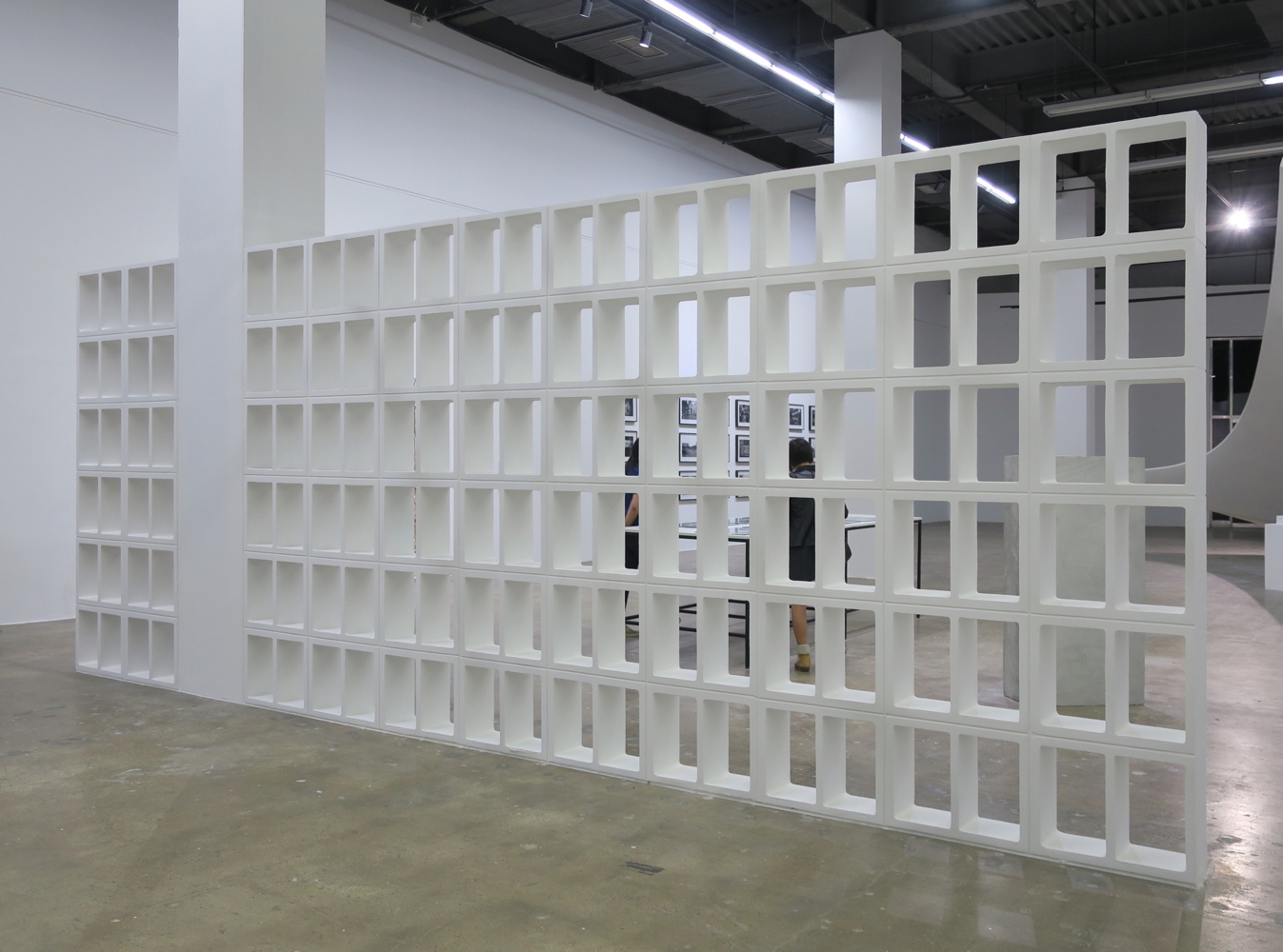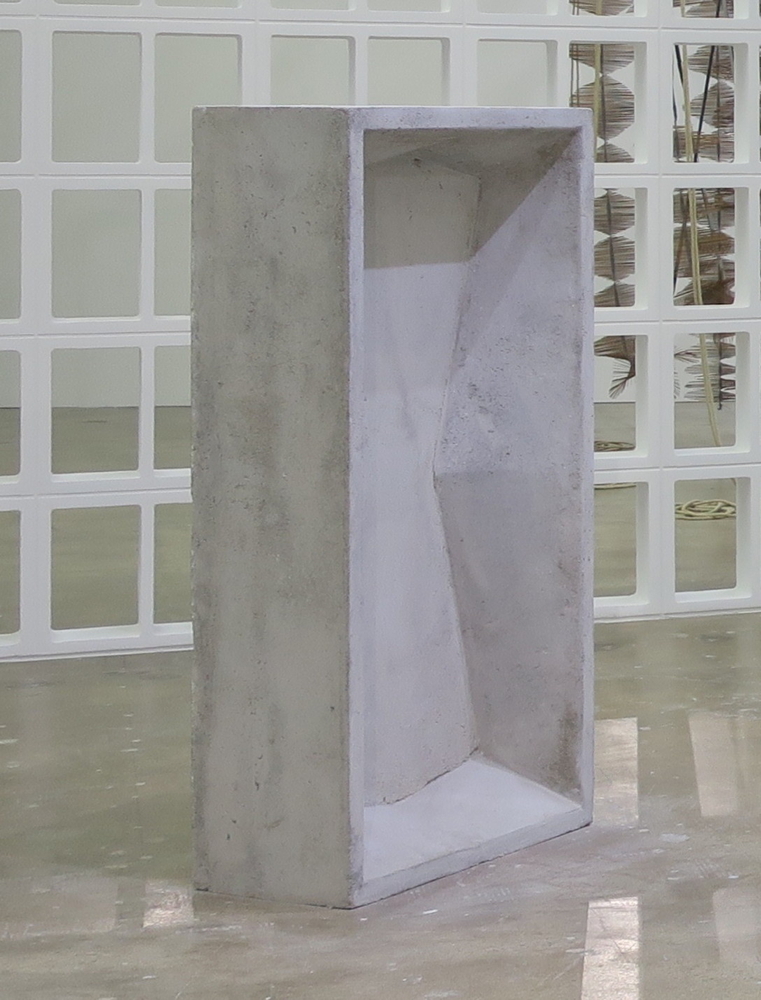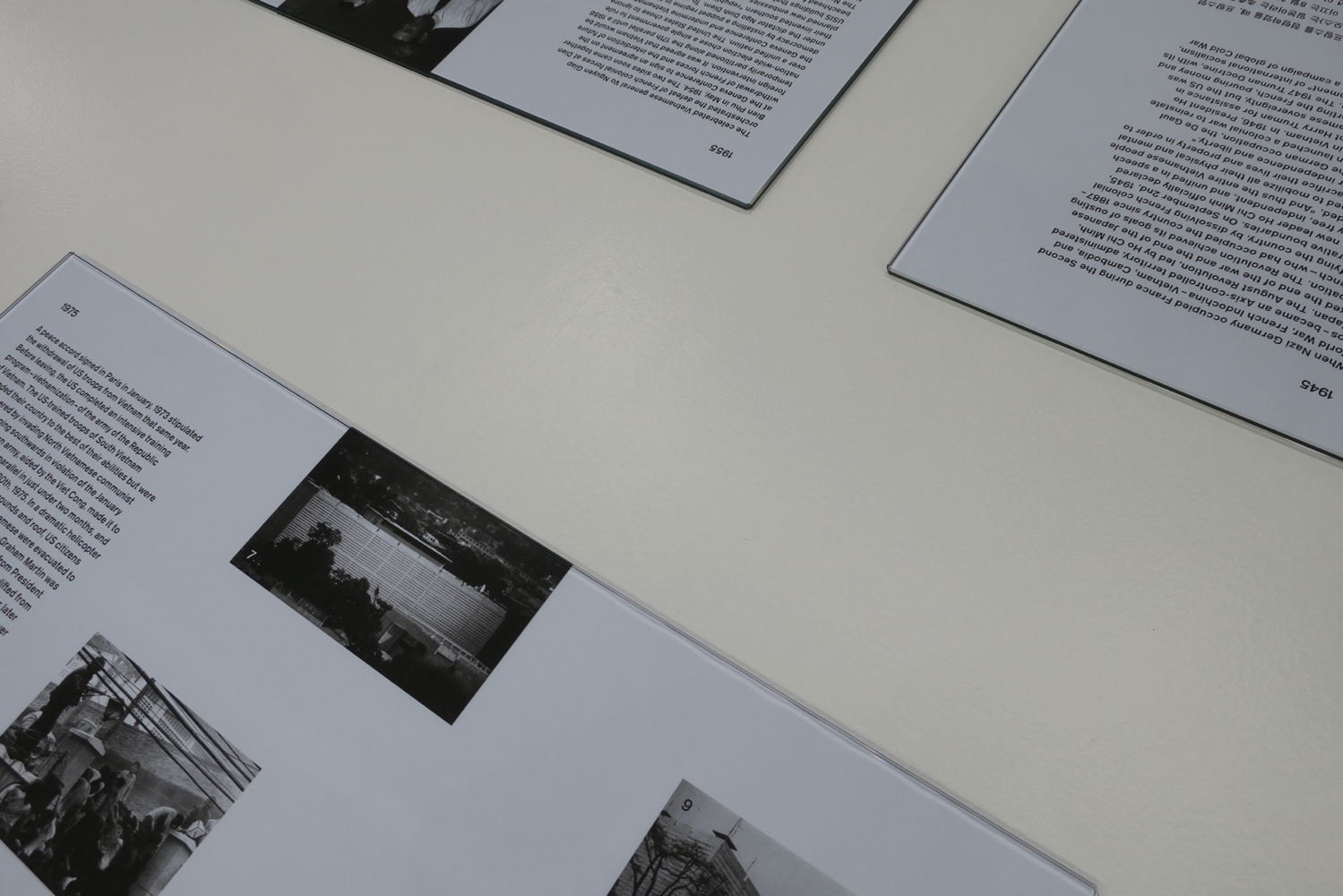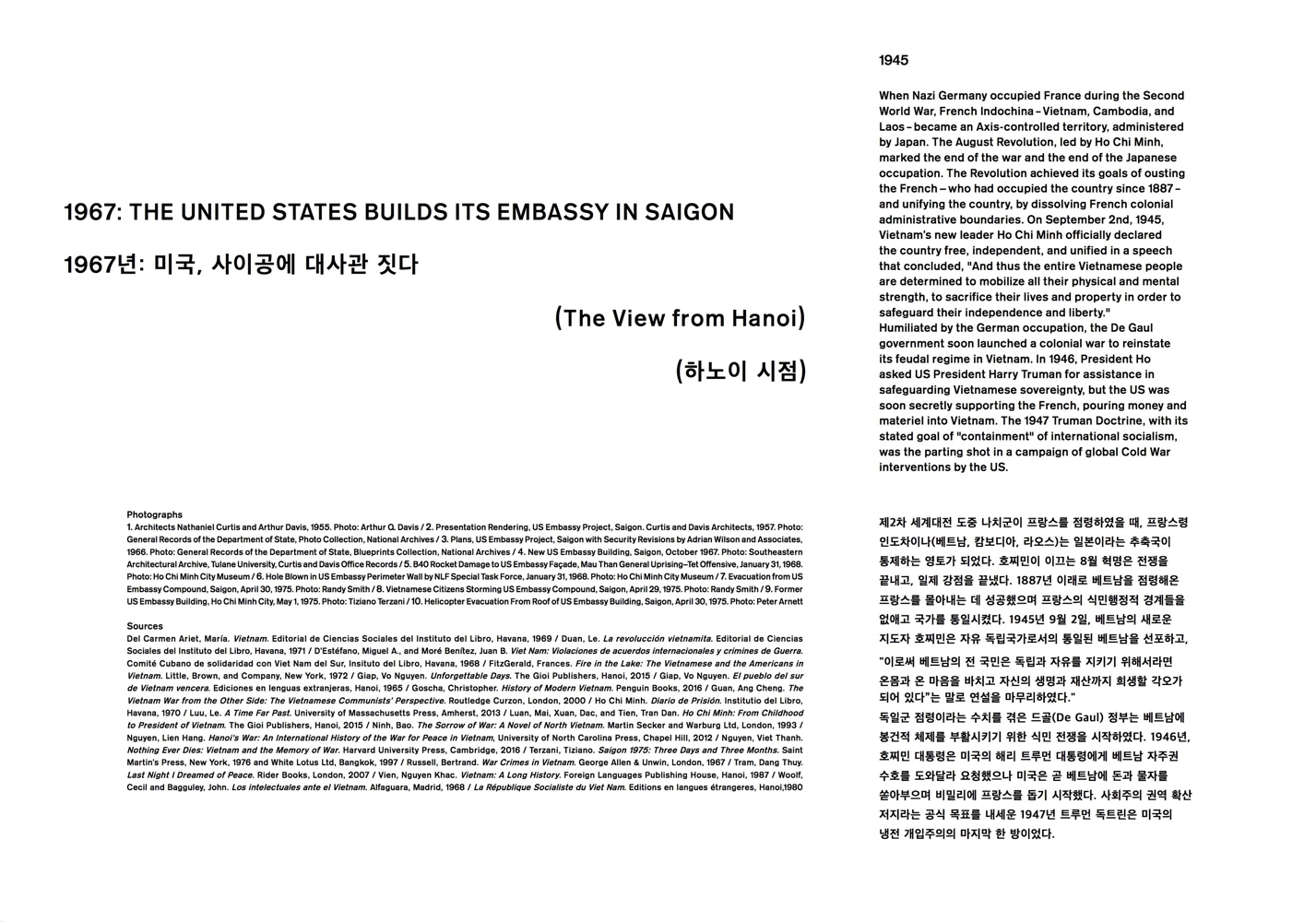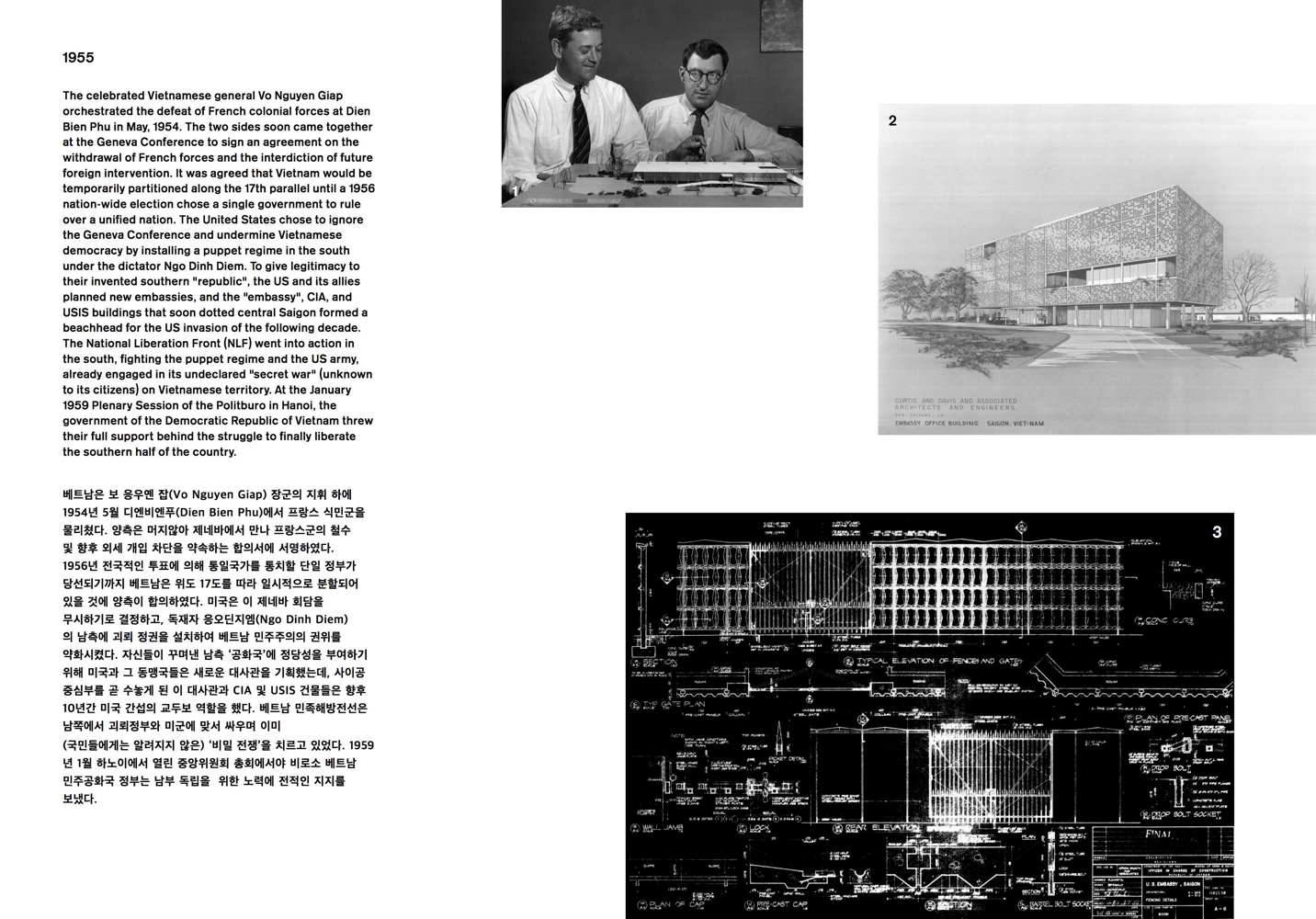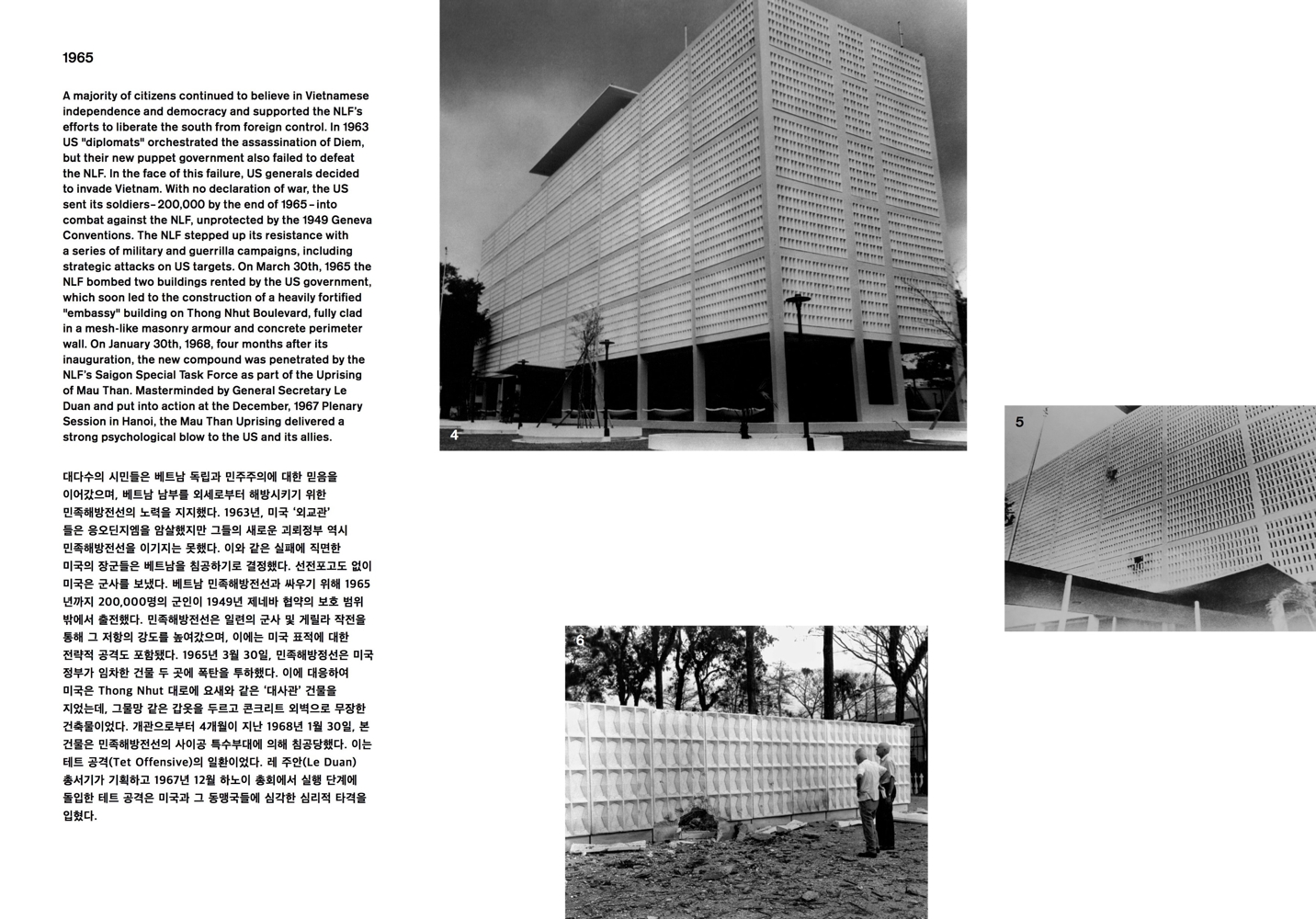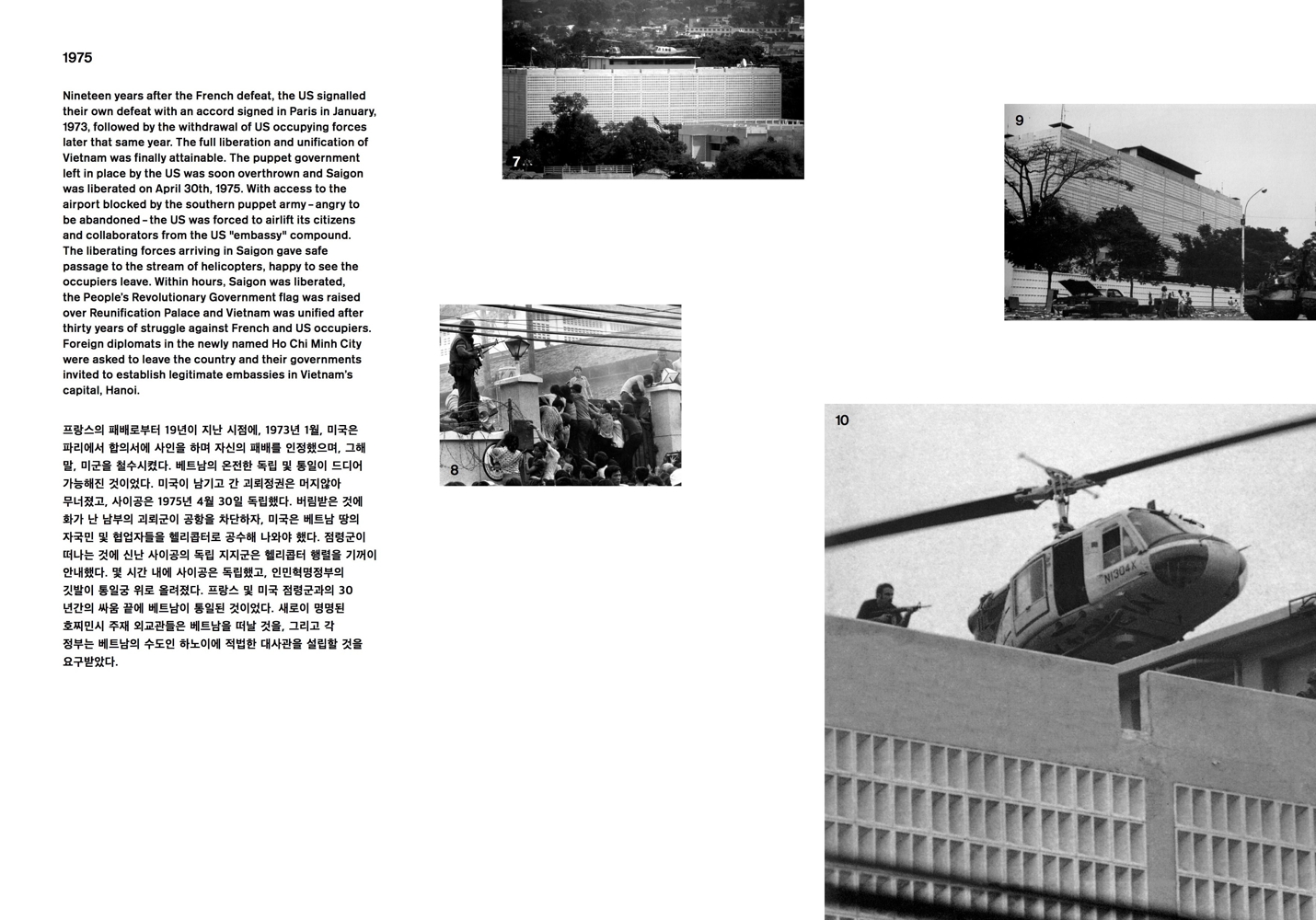Commissioned by the 12th Gwangju Biennale, Saigon Case Study is structured around two texts that tell the story of the planning, construction, and eventual abandonment of the US embassy in Saigon from opposing perspectives; The View from Hanoi and The View from Washington. Each text runs through four prints with identical layouts and illustrations, and each advances its own interpretation, including a distinct nomenclature, of events in the long Vietnam conflict of the 1960s and 70s. The delicate tissue between these two narratives is the skin of the US embassy building itself: a concrete lattice facade and a sculptural perimeter wall, both penetrated in the 1968 Mau Than General Offensive and Uprising (known as the Tet Offensive in the US). These concrete membranes are the models for the installation’s two large-scale sculptures: a 1:1 recreation of a full section of the building’s lattice wall in resin-coated EPS foam; and a module from the compound’s perimeter wall, cast in solid concrete.
Documentation:
Installation views at the 12th Gwangju Biennale, Gwangju, Korea. Curator: Clara Kim. Graphics: Vincent Schneider
Saigon Case Study
Terence Gower, 2018
Table: 8 black and white plotter prints under glass, 120 x 320 x 92 cm
Sculpture 1: White enamel on resin-coated EPS foam, 266 x 682 x 25 cm
Sculpture 2: Solid, reinforced concrete, 150 x 72.5 x 37.5 cm
